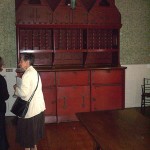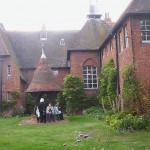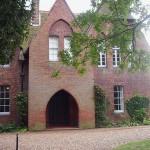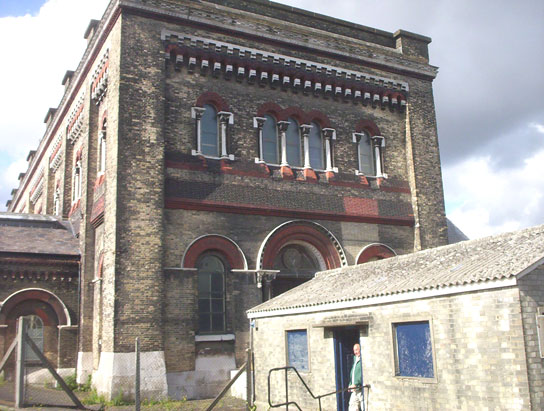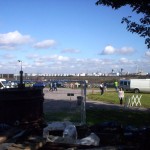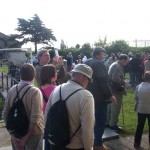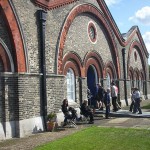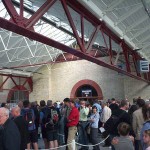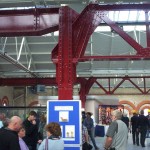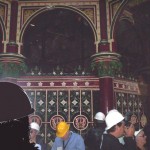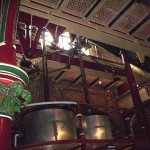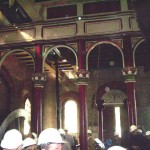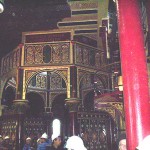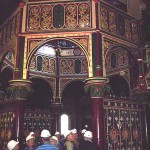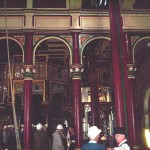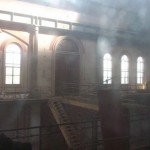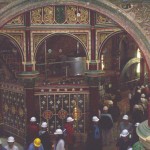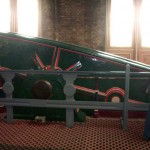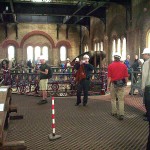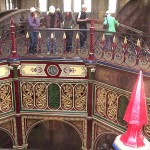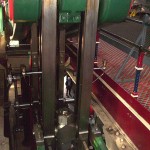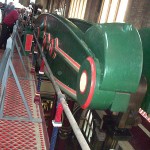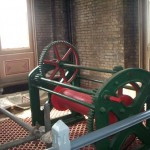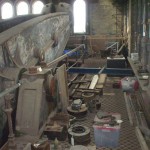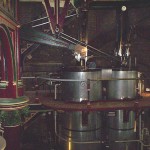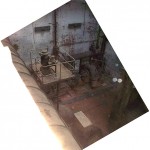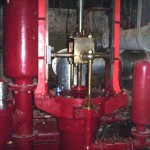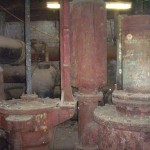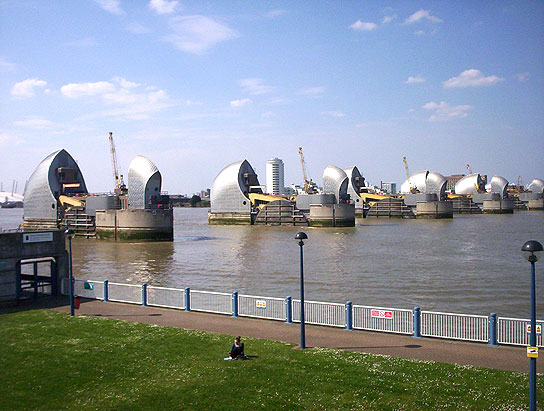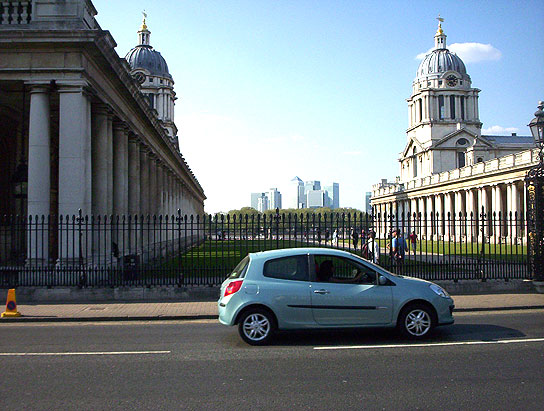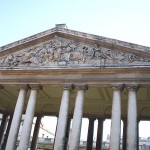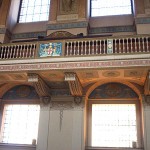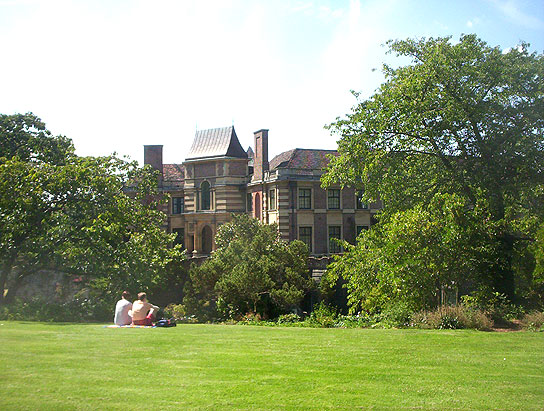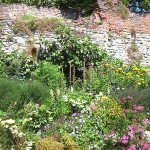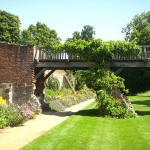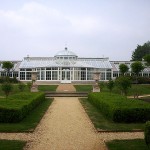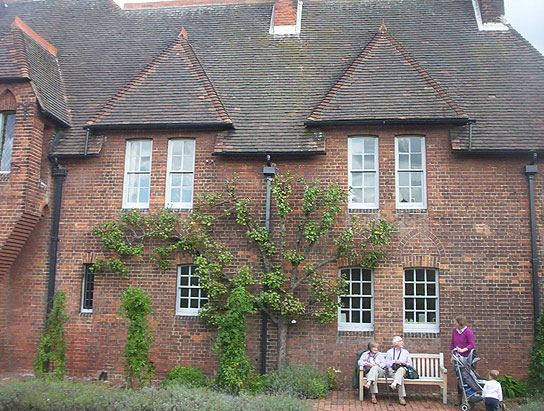
National Trust.
The house, rather vaguely signposted, lies near Upton Road in the Bexleyheath area of SE London, near the A207 and Bexleyheath railway station. B11 and other buses run nearby. The building is smaller than I imagined before seeing it – not a mansion but a substantial suburban gentleman’s residence. It’s of interest essentially as the only house built for William Morris, the famous Arts & Crafts movement designer. The architect was Morris’ friend Philip Webb. Few of the original moveable contents remain, but the architecture, windows and some items of decoration are much as built. There is a pleasant and quite large garden, laid out in several sections – itself an innovation at the time. Surprisingly, Morris only lived in the house from 1860-1865, but later owners were sympathetic to his creation. Morris tried to found an artistic community at Red House, but sold it when this failed.
It doesn’t take long to go around the house and gardens – I arrived after 3pm and had seen everything by about 4pm. Fewer than half the rooms are open to the public. On arrival you should note that visitor reception is away from the house, in the old stables hidden behind trees to your left.
Curious facts: Morris disliked industrial production and wanted to re-instate the craft traditions of an earlier era, but his creations, popular with some of the middle classes, were too expensive to be bought by the craft workers he admired. Morris himself was quite well-off – his house cost £4000, which was twice what my parents’ house cost a century later. The house, which originally had murals and wall-hangings and no wallpaper, is now partially papered with Morris & Co designs. When I visited, there was an exhibition about Morris & Co designs in a room downstairs.
And don’t put your stuff on the table in the dining room – the NT don’t like anyone to touch it. This table, designed by Philip Webb, was bought recently for £130,000 !
Nearest railway station is Bexleyheath (3/4 mile) . There is no car park at the house. Recommended parking is at Danson Park leisure facilities – which is no closer than the railway station. Buses run along the A207 nearby. On foot from A207, walk down Upton Rd, which is almost opposite the road from the station.
Done here and looking for something else to do? Danson Park and its historic house (0.8 mile)look really interesting.
